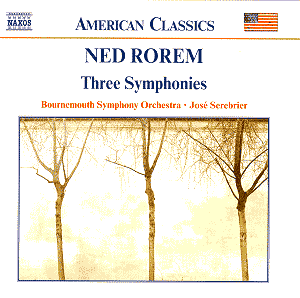Whatever
"American" Style is, it is often alleged to have something
to do with the experience of the great central plains of North
America.* Most of the creators of it spent time in Paris studying
with Nadia Boulanger and with the exception of Roy Harris many
of them rarely travelled west of the Hudson River. By the time
Ned Rorem got around to writing his three symphonies, "American"
style could as easily be learned at the Leningrad Conservatory
as at Stuttgart, Vienna, or London. The one place it couldn’t
be learned was at the Juilliard school in New York City which
was obsessed with turning out Schoenberg clones, but wouldn’t
hire the real Schoenberg.
Whatever
"American Style" is, Louis Moreau Gottschalk, George
Chadwick, John Knowles Paine, Edward MacDowell, Charles Tomlinson
Griffes, Charles Martin Loeffler, Leonard Bernstein, Phillip Glass,
and Alan Hovhaness never utilised it. Apparently there are some
echoes of it in Dvořák, Malcolm Arnold, Hindemith and Berwald,
a little bit in Samuel Barber’s Symphony #1, and certainly a lot
of it in these three symphonies by Ned Rorem.
Rorem’s
works are certainly more songful and perhaps a little more interesting
than some other works they resemble—symphonies by Walter Piston,
George Antheil, and Roy Harris—perhaps not quite so interesting
as the two great masterpieces of the genre, the William Schuman
and the Aaron Copland Third Symphonies, which have yet to receive
a recording that sounds as good as this one. Rorem’s music has
a lyrical vocality to it, but he doesn’t allow a good tune to
overwhelm his symphonic structure.
*R.
D. Darrell says it is a "mixture of holiday minstrelsy and
Sunday hymnody." But one would think Europe had these also
to at least the same degree. I think it has more to do with the
American musical patrons being rich Protestant farmers and businessmen,
instead, as in Europe, of being aristocrats (or businessmen aping
aristocrats) with at least some lingering sense of medieval church
tradition. Artists quickly learn to flatter the taste of those
paying the bills.
Paul
Shoemaker
see also review by Rob
Barnett
